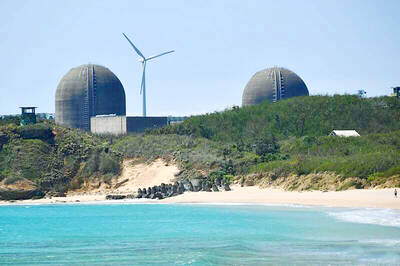For our three-day trek, 4,300m up in the Indian Himalayas in Kashmir, we’d come prepared with waterproofs, walking boots, sleeping bags and a tent. Guru Shanker Abharshila, on the other hand, had only a grubby white robe, plastic flip-flops and a small bag of apples. That, and a wooden board strung with rope on which he would prop himself up to sleep (a Hindu sadhu, or holy man, he had made a vow to Lord Shiva that he would not sit or lie down for 12 years). Others, including stooped women in their 80s, went barefoot, and there was even a one-legged sadhu who overtook us on crutches. This was no ordinary mountain walk; we were on the annual pilgrimage, or yatra, to the Amarnath cave.
There lies the Shiva-lingam, an ice stalagmite that forms in the cave between May and August. For Hindus it’s a manifestation of Lord Shiva, who chose the cave to reveal the secret of eternity to his consort Parvati. Since time immemorial devotees have been making the arduous 50km trek, zig-zagging up steep mountainsides and crossing streams of glacial melt-water to pay homage to the miraculous appearance of their god. Pilgrim numbers have peaked at 500,000 in recent years. Unfortunately, the Shiva-lingam has not always been there to greet them. Due to both global warming and the sheer body heat of so many people, the ice stalagmite has failed to form, or else melted unnaturally early.
In the town of Pahalgam, two hours from Srinagar, we organized a luggage pony and guide for US$50 for three days (food and tents are provided free on the trek) then took a taxi to Chandanwari, one of the yatra’s main starting points.
The first leg of the journey is one of the toughest, a 600m scramble up a steep, rocky hillside, accompanied by throngs of orange-clad pilgrims. The slopes echo with cries of “Jai Shiva shankar!” and “Bom bom bhole!” (“hail Lord Shiva!,” “all hail!”). At the summit at Pissu Top, we sheltered beneath a plastic awning, sharing a hookah and Kashmiri chai with pilgrims, dreadlocked sadhus and soldiers.
A shock awaited us at the lake of Sheshnag, our first designated camping point. I’d expected something resembling a lakeside hippy festival. But instead we were greeted by razor wire, dilapidated pre-fabs looming out of the mist, rows of sodden khaki tents and mounds of plastic waste.
Once settled in, our spirits improved. There was a langar (a free food tent) offering dhal, rice and chapatis, and we were hustled to the front of Hindu prayers to have our foreheads liberally smeared with red kumkum powder.
The second day’s trek was easier — the clouds finally burnt away, revealing snowcaps and glaciers on higher peaks, the minute scale of this human journey against the impossibly vast Himalayas. We understood why these are regarded as the literal abode of the gods.
Descending a long, curving valley, we refreshed at another langar at Poshipathri, then continued to the final campsite, directly beneath the holy cave. The site can only be described as a glacial shantytown. It had been occupied for almost two months, and looked as if the cave’s wide mouth had disgorged a tide of tarpaulins — temporary dwellings and stalls selling glitzy religious tat.
But amazing hospitality compensated for less salubrious aspects. We stayed inside the main langar, presided over by a stern-looking man propped up in bed with an enormous trident, and a friendly soldier warned us of the dangers of landslides and bears, who emerge after dark, apparently, to eat chapatis.
First thing the next morning: at last, the holy cave. Sadhus lined the path, sitting by little fires, smeared with ash, necks hung heavy with charms and medallions, dutifully getting stoned.
Inside the cave were bells, flowers, incense, statues of gods. But no Shiva-lingam. It had melted weeks ago. All we could see beyond the yellow guardrail was the rock at the back of the cave. But the pilgrims still gave offerings, revering the space where the stalagmite had been. The atmosphere was hushed, respectful, awed. Our new friend Salil Kumar explained why it’s still sacred. “Even though there is no Shiva-lingam, there is holy snow. Even if no holy snow, there is holy water.”
Does Salil connect the melting with human activity? “Of course. We breathe in oxygen and breathe out carbon dioxide. Also, we give out body heat. But it’s beyond our control. It is the will of Lord Shiva.
This echoes what other pilgrims told me. Many are aware of climate change, but few see any connection to what’s happening in the cave. The lingam has never been explained, and the divine — by definition — goes beyond human understanding. “No geologist, no scientist has ever found the source,” says Salil. “It’s a holy mystery.”
Salil assures us that in this holy place all wishes will be granted, for the betterment of humankind. One of my wishes is that Amarnath will be saved from pollution and tourism, religious or otherwise. It would be a tragedy if ever-increasing throngs, in their devotion, destroy the very thing they love.
► On the Net: amarnathyatra.org; kashmirtourism.com

No one saw it coming. Everyone — including the Chinese Nationalist Party (KMT) — expected at least some of the recall campaigns against 24 of its lawmakers and Hsinchu Mayor Ann Kao (高虹安) to succeed. Underground gamblers reportedly expected between five and eight lawmakers to lose their jobs. All of this analysis made sense, but contained a fatal flaw. The record of the recall campaigns, the collapse of the KMT-led recalls, and polling data all pointed to enthusiastic high turnout in support of the recall campaigns, and that those against the recalls were unenthusiastic and far less likely to vote. That

Behind a car repair business on a nondescript Thai street are the cherished pets of a rising TikTok animal influencer: two lions and a 200-kilogram lion-tiger hybrid called “Big George.” Lion ownership is legal in Thailand, and Tharnuwarht Plengkemratch is an enthusiastic advocate, posting updates on his feline companions to nearly three million followers. “They’re playful and affectionate, just like dogs or cats,” he said from inside their cage complex at his home in the northern city of Chiang Mai. Thailand’s captive lion population has exploded in recent years, with nearly 500 registered in zoos, breeding farms, petting cafes and homes. Experts warn the

A couple of weeks ago the parties aligned with the People’s Republic of China (PRC), the Chinese Nationalist Party (KMT) and the Taiwan People’s Party (TPP), voted in the legislature to eliminate the subsidy that enables Taiwan Power Co (Taipower) to keep up with its burgeoning debt, and instead pay for universal cash handouts worth NT$10,000. The subsidy would have been NT$100 billion, while the cash handout had a budget of NT$235 billion. The bill mandates that the cash payments must be completed by Oct. 31 of this year. The changes were part of the overall NT$545 billion budget approved

The unexpected collapse of the recall campaigns is being viewed through many lenses, most of them skewed and self-absorbed. The international media unsurprisingly focuses on what they perceive as the message that Taiwanese voters were sending in the failure of the mass recall, especially to China, the US and to friendly Western nations. This made some sense prior to early last month. One of the main arguments used by recall campaigners for recalling Chinese Nationalist Party (KMT) lawmakers was that they were too pro-China, and by extension not to be trusted with defending the nation. Also by extension, that argument could be